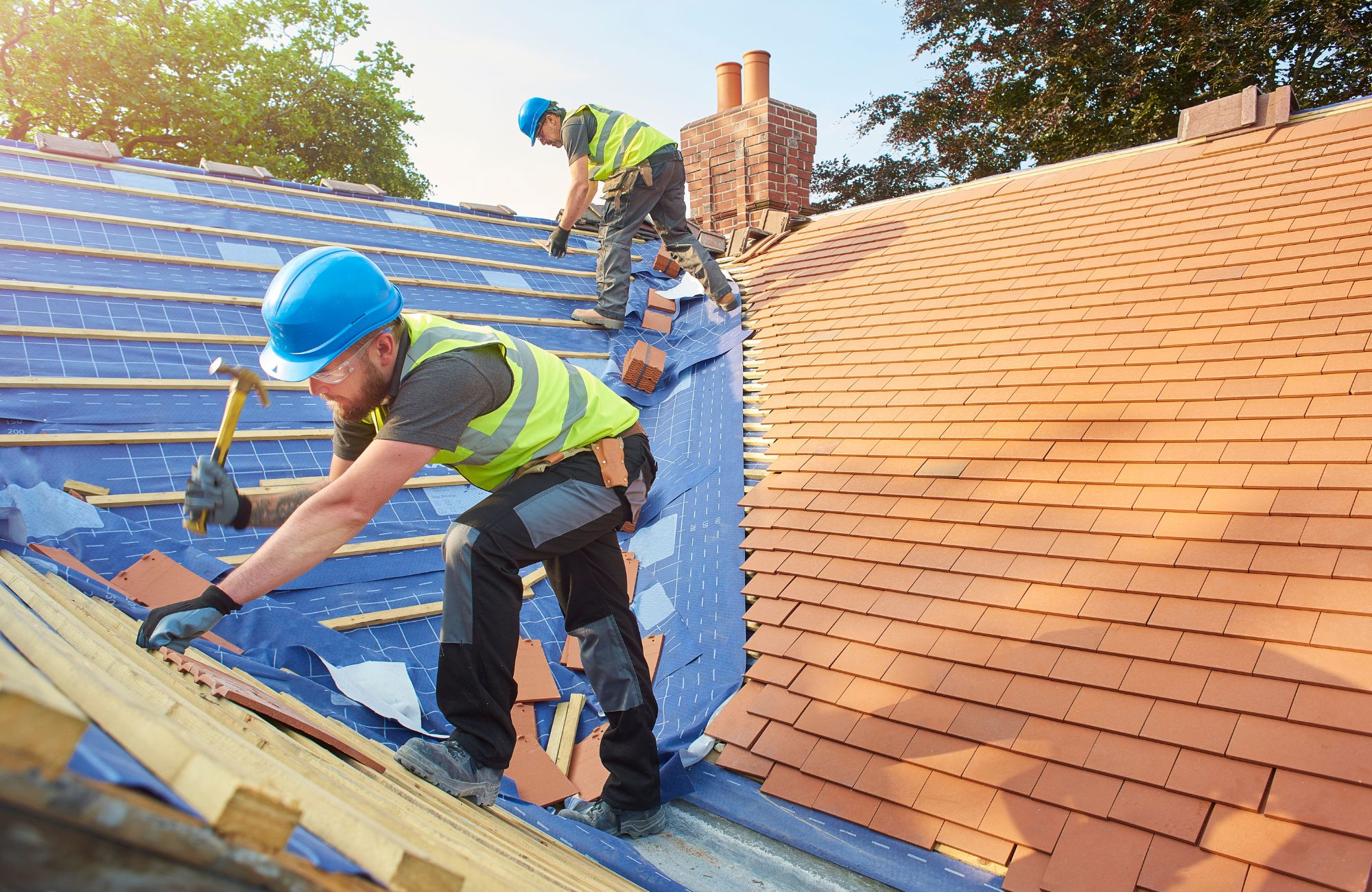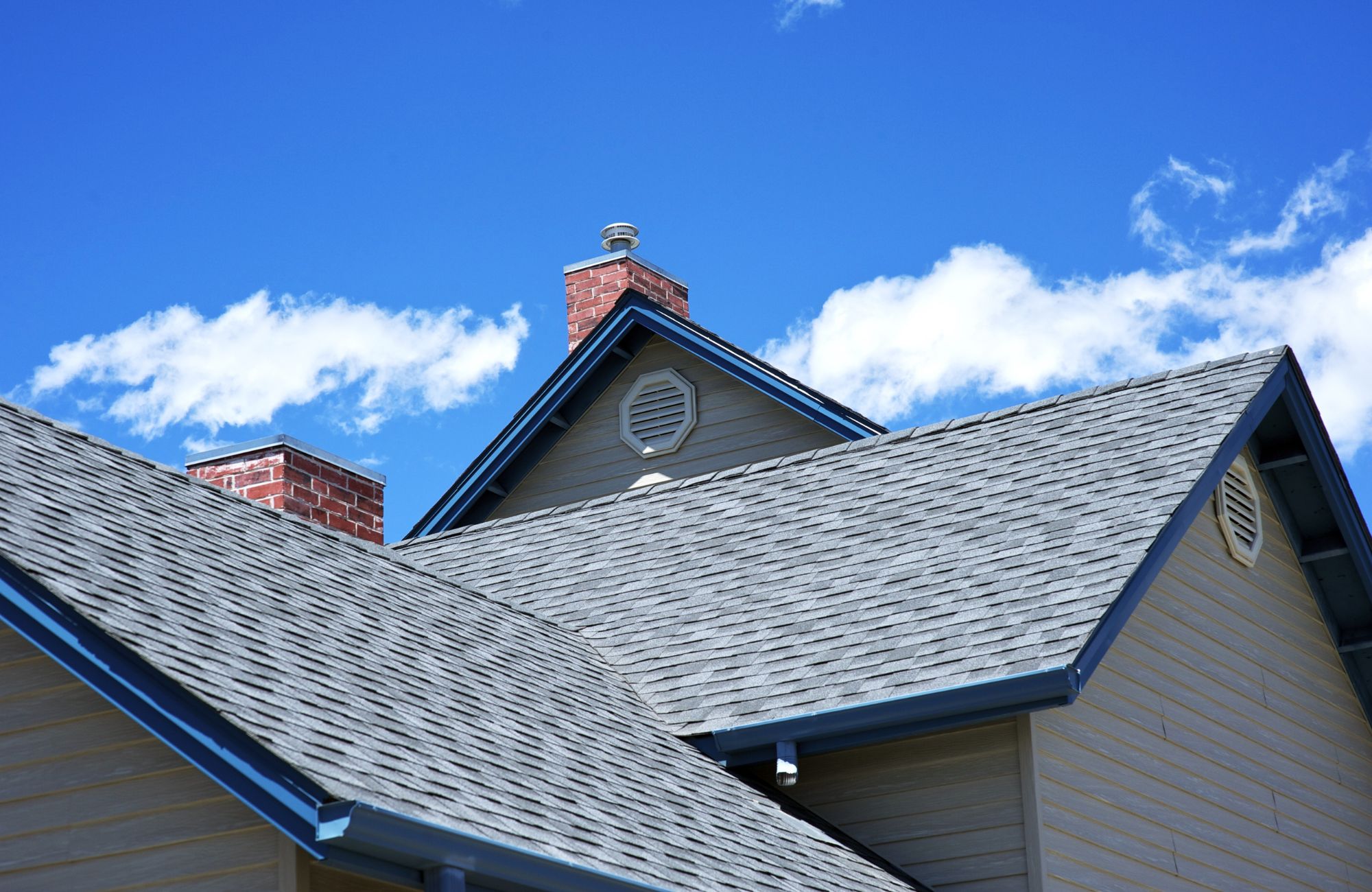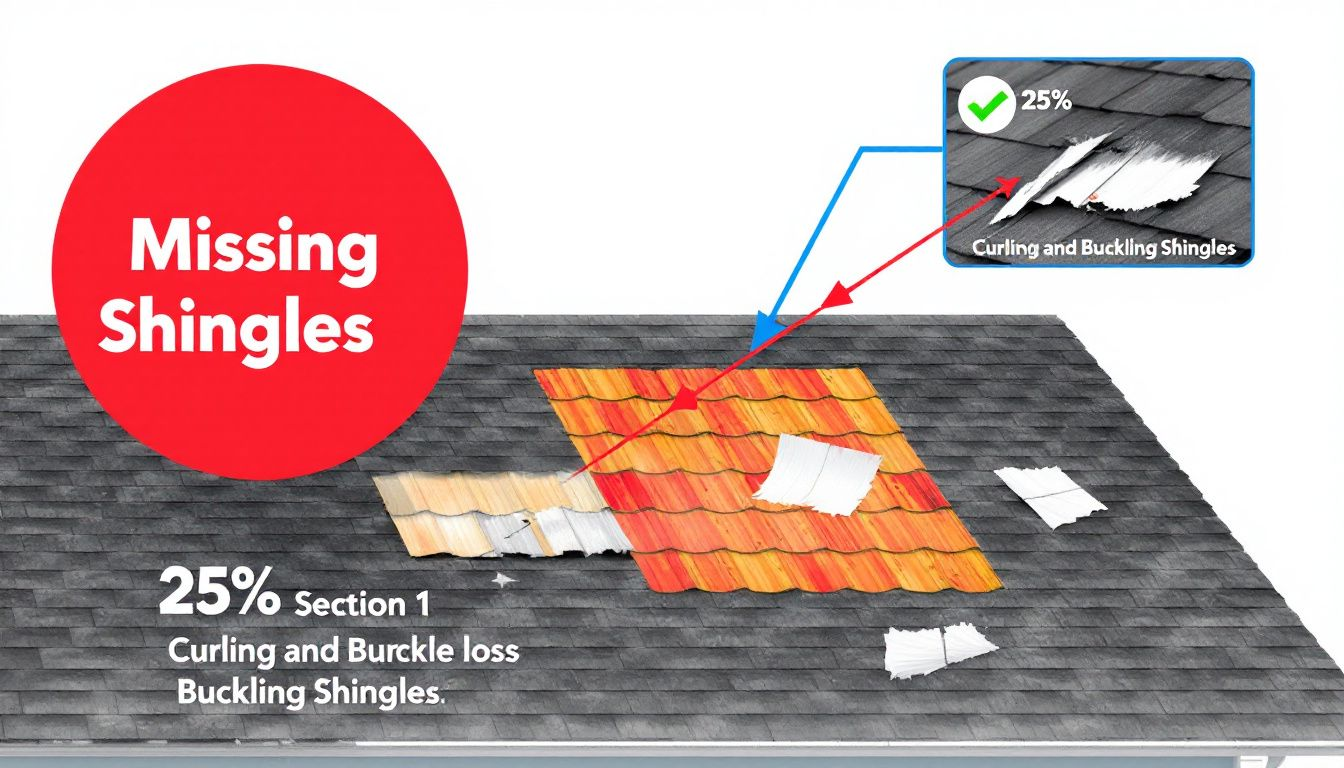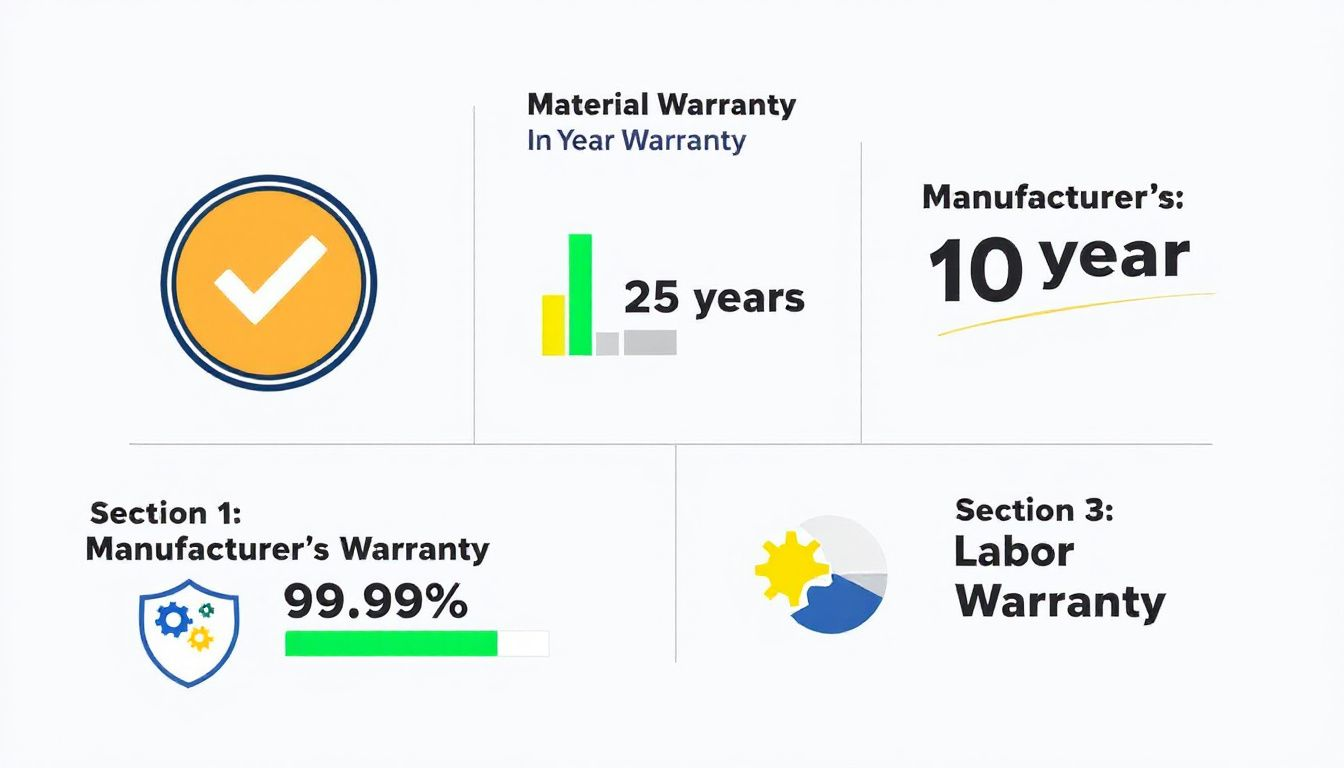 How Long Should a Roof Last? Key Factors and Lifespan Tips
How Long Should a Roof Last? Key Factors and Lifespan Tips
How long should a roof last? It varies widely by material and maintenance. This guide explores roof lifespans, key factors influencing longevity, and tips to extend your roof’s life.
Key Takeaways
-
The lifespan of roofs varies significantly by material, ranging from 15 years for asphalt shingles to over 100 years for tile roofs.
-
Key factors influencing roof longevity include material quality, installation practices, climate conditions, and regular maintenance.
-
Recognizing signs of roof damage early and scheduling professional inspections can help homeowners avoid costly repairs and extend roof lifespan.
Understanding Roof Lifespan by Material
The lifespan of your roof heavily depends on the type of roofing material used. Different materials offer varying degrees of durability, resilience, and longevity, which can significantly impact how long your roof lasts. While the average roof lifespan ranges from 25 to 50 years, the specific material and its quality, along with regular maintenance, play a crucial role in determining this duration.
As we dive into the specifics of different roofing materials, you’ll discover the unique benefits and potential drawbacks of each. From the common and cost-effective asphalt shingles to the luxurious and long-lasting slate roofs, understanding these differences will help you make informed decisions about your roofing needs.
We will explore the lifespans and characteristics of various roofing materials, beginning with asphalt shingles, then moving to asphalt shingle roofs, metal roofs, tile roofs, wood shingles and shakes, and finally, slate roofs.
Asphalt Shingles
Asphalt shingles are the most common roofing material in the United States, known for their affordability and ease of installation. Typically, asphalt shingles last between 15 to 30 years, with architectural shingles pushing the lifespan up to 50 years under optimal conditions. However, the actual lifespan can vary based on the type and quality of the asphalt shingle used. For instance, 3-tab asphalt shingles have a realistic lifespan of around 15 to 20 years despite a manufacturer-stated lifespan of up to 25 years.
Architectural asphalt shingles, which are more durable and aesthetically pleasing, can last approximately 22 to 25 years under typical conditions. These shingles, also known as dimensional shingles, often come with a warranty duration of around 30 years, reflecting their enhanced durability.
However, climate conditions play a significant role; asphalt shingles in warmer climates tend to deteriorate faster due to excessive heat and UV exposure.
Metal Roofs
Metal roofs are celebrated for their longevity and durability, with a roof’s lifespan ranging from 40 to 70 years depending on the specific type of metal and maintenance practices. These roofs are not only resistant to extreme weather conditions but also require minimal maintenance compared to other materials.
This makes metal roofing an excellent investment for homeowners seeking a long-term roofing solution.
Tile Roofs
Tile roofs, including clay and concrete tiles and concrete tile roofs, are among the most durable roofing materials available, with a lifespan that can exceed 100 years. They offer exceptional resistance to severe weather, making them ideal for regions prone to harsh conditions.
The longevity and resilience of tile roofs make them a preferred choice for homeowners who prioritize durability and low maintenance.
Wood Shingles and Shakes
Wood shingles and shakes provide a natural and rustic aesthetic, with a typical lifespan of 30 to 50 years. However, they can last up to 80 years with high-quality wood and meticulous maintenance. The type of wood used and the climate conditions significantly influence the longevity of wood shingles. In damp climates, wood shingles may require more frequent replacement due to mold and rot.
Regular maintenance is crucial for wood shingles and shakes. This includes cleaning to prevent moss growth and rot, which can compromise the roof’s integrity. With proper care, wood shingle roofs can offer lasting beauty and protection for your home.
Slate Roofs
Slate roofs are renowned for their exceptional lifespan, lasting between 50 to 200 years. Known for their durability and resistance to various elements, slate roofs are a premium choice for homeowners seeking a long-term roofing solution.
The investment in a slate roof pays off with minimal maintenance and unparalleled longevity.
Influencing Factors on Roof Longevity

Several factors influence the lifespan of a roof, ranging from the type of materials used to the quality of installation and maintenance practices. Understanding these factors can help you take proactive steps to extend your roof’s life expectancy and avoid premature roof replacement.
Climate and weather conditions play a significant role in determining how long your roof lasts. Extreme temperatures, severe weather, and environmental conditions can all impact the durability of your roofing materials. Additionally, the quality of installation is crucial; improper installation can lead to issues that shorten your roof’s lifespan. Regular maintenance and quality underlayment and waterproofing are also essential for protecting your roof and enhancing its durability.
Let’s delve deeper into these critical factors, starting with the impact of climate and weather conditions on roof longevity.
Climate and Weather Conditions
Extreme weather and fluctuating temperatures can significantly shorten the lifespan of roofs. In hot climates, excessive heat and UV exposure can cause asphalt shingles to deteriorate faster. Severe weather events, such as hailstorms and blizzards, can drastically reduce the lifespan of asphalt roofs, causing granular loss and other damage.
Roofs in regions with frequent hail are particularly vulnerable, as the impact can strip protective granules from shingles, leading to faster deterioration.
Installation Quality
The quality of roof installation is paramount for ensuring its longevity. Mistakes during installation, such as poor fastening or inadequate underlayment, can lead to reduced roof lifespan. Poor installation practices can result in issues like cracked or missing shingles, exposing the roof to wind and water damage.
Hiring experienced and skilled roofing contractors ensures proper installation and prevents future problems.
Roof Ventilation
Proper attic ventilation is crucial for maintaining roof integrity over time. Adequate ventilation prevents moisture buildup, overheating, and freezing, which can all contribute to roof damage. Without proper ventilation, heat buildup can warp shingles, significantly shortening their lifespan.
Professional inspections can identify and address ventilation issues, keeping the roof in good condition.
Maintenance Practices
Maintaining the roof regularly extends the life of any roofing material. Engaging a professional for roof inspections can reveal minor damage early, saving homeowners from costly repairs in the future. Regularly cleaning roof debris and inspecting for damaged shingles can significantly extend a roof’s lifespan.
Proactive maintenance strategies can greatly enhance a roof’s durability and extend its life.
Underlayment and Waterproofing
High-quality underlayment is essential for preventing moisture damage and prolonging roof life. Quality underlayment provides a waterproof barrier, protecting the roofing material and underlying structures from water intrusion.
Using effective waterproofing methods helps to minimize the risk of roof leaks and structural damage, ultimately extending the lifespan of the roof.
Signs Your Roof May Need Replacement

Recognizing the signs that indicate your roof may need replacement is crucial for maintaining a safe and secure home. Early detection of issues can help you plan for roof replacement before significant damage occurs. Common indicators include leaks, water stains in your attic, and noticeable shingle damage like curling or cupping.
Harsh weather conditions, such as hurricanes or heavy snowfall, can accelerate roof wear and shorten its lifespan. Being proactive in monitoring your roof’s condition and planning for replacement if you notice significant damage can save you from costly repairs in the long run.
Let’s explore some of the specific signs that may indicate it’s time for a roof replacement.
Missing Shingles
Missing or deteriorating shingles can compromise the roof’s integrity, making it susceptible to leaks and other issues. Ignoring missing or damaged shingles may lead to expensive repairs and a decreased lifespan of the roof.
Promptly addressing missing shingles can prevent further damage and costly repairs in the long run.
Sagging Ceilings
Visible sagging in ceilings often indicates significant roof issues that could require immediate replacement. This is a strong indicator that water has penetrated the roof, compromising its integrity. Addressing this issue promptly can prevent further damage to the roof structure and interior of your home.
Frequent Repairs
If your roof requires frequent repairs, it can indicate underlying issues that may compromise the roof’s effectiveness. It might be more cost-effective to consider roof replacement rather than continually investing in frequent repairs.
Considering replacement options early can save on long-term repair costs and ensure better protection for your home.
Extending Your Roof’s Life Expectancy
Extending your roof’s life expectancy is a smart investment in your home’s future. Proper materials, installation quality, and regular maintenance are essential for maximizing your roof’s longevity. Smart choices and proactive care can significantly increase your roof’s life expectancy, saving you from premature roof replacement.
Annual inspections and maintenance services are crucial for extending the lifespan of asphalt roofs. Regular professional inspections can significantly prolong a roof’s lifespan by identifying and addressing potential issues before they worsen.
We will now look at practical tips for extending your roof’s life expectancy.
Regular Inspections
Frequent inspections help prevent damage and extend a roof’s lifespan. Annual roof inspections are recommended to ensure the roof remains in good condition. Proactive maintenance, including regular inspections, helps identify small issues early, preventing them from escalating into major problems.
Gutter Maintenance
Clean gutters are critical in preventing water from pooling on the roof or causing leaks in the home. Keeping gutters clear prevents water from pooling on the roof, which can lead to significant damage.
Increasing the frequency of gutter cleaning is important as roofs and gutters age.
Tree Trimming
Trimming overhanging branches regularly can extend your roof’s lifespan. Overhanging branches can physically damage your roof by scraping against surfaces and causing wear. Branches that touch the roof can trap moisture, leading to increased moss growth.
To protect your roof, make it a habit to regularly trim trees and branches.
The Role of Warranties in Roof Lifespan

Warranties play a vital role in providing financial protection and peace of mind for homeowners. While a roof’s life expectancy is typically longer than its warranty duration, warranties offer assurance against unexpected issues that may arise. Understanding the types and limitations of warranties can help you make informed decisions about your roofing investment.
Roof warranties are crucial for protecting your investment and covering costly repairs. However, warranties do not replace the need for regular roof maintenance. We will examine the different types of warranties and their limitations.
Types of Warranties
There are typically three main types of roofing warranties: standard manufacturer, workmanship, and extended manufacturer warranties. Standard manufacturer warranties cover defects in the roofing materials, while workmanship warranties guarantee the quality of the contractor’s installation.
Extended warranties often offer more comprehensive coverage but may require a complete roof system to be installed for maximum protection. It’s crucial to register warranties to ensure future claims are honored and to avoid issues related to non-registration.
Warranty Limitations
While warranties provide crucial financial protection and peace of mind, they come with limitations. They do not cover damages resulting from improper installation, severe weather, or lack of regular maintenance. Understanding these limitations is essential, as warranties do not replace the need for regular roof maintenance to prevent frequent repairs and extend the roof’s life.
Ultimately, warranties offer peace of mind for unexpected issues but should be complemented with proactive care and maintenance.
Scheduling Professional Roof Inspections
Regular professional roof inspections help maintain your roof’s health and longevity. Professional inspections can identify issues like cracked or broken tiles that homeowners might overlook. Homeowners should inspect their roofs for damage in spring and summer, clean gutters in autumn, and check for ice dams in winter to maintain roof health.
Hiring a quality roofing contractor ensures the use of high-grade materials and proper installation, leading to a longer-lasting roof. Choosing a reputable roofing company guarantees correct installation and regular maintenance, which are essential for roof durability.
We will now explore the benefits of professional inspections and tips for finding reliable contractors.
Benefits of Professional Inspections
Professional roof inspections provide expert insights and identify potential issues that homeowners may overlook. Conducting regular roof evaluations helps in addressing damages early and avoids costly repairs in the future.
A detailed inspection report also aids in making insurance claims after severe weather damage, helping to secure necessary repairs.
Finding Reliable Roofing Contractors
Finding reliable roofing contractors is crucial for ensuring the proper inspection and maintenance of your roofing system. Verifying a contractor’s licensing and insurance is vital for ensuring safety and quality work.
Choosing licensed and experienced contractors ensures that your roof will be inspected and maintained correctly, which is essential for its long-term durability.
American Home Contractors Is a Premier Residential Roofing Company in NJ
American Home Contractors is a trusted and premier residential roofing company in New Jersey. Specializing in GAF roofing installation, roofing repairs, and new roof installations, we bring unparalleled expertise and dedication to every project. Our team of skilled professionals is committed to using high-quality materials and ensuring proper installation to extend the lifespan of your roof.
Whether you need routine maintenance, emergency repairs, or a complete roof replacement, American Home Contractors is here to help. With our extensive experience and customer-focused approach, we guarantee satisfaction and peace of mind for all your roofing needs. Trust us to protect your home with durable roofing solutions tailored to your specific requirements.
Summary
Understanding the lifespan of your roof and the factors that influence it is essential for maintaining a safe and secure home. Different roofing materials offer varying lifespans, and factors such as climate, installation quality, and regular maintenance play critical roles in extending your roof’s life expectancy. Recognizing the signs that indicate it’s time for a roof replacement and taking proactive steps to maintain your roof can save you from costly repairs and ensure your roof lasts as long as possible.
In conclusion, investing in high-quality materials, proper installation, and regular maintenance is key to maximizing the longevity of your roof. By scheduling professional inspections, maintaining clean gutters, and trimming overhanging branches, you can significantly extend your roof’s lifespan. Remember, a well-maintained roof not only protects your home but also enhances its overall value and curb appeal. Take action today to ensure your roof stands strong for years to come.
Frequently Asked Questions
How long does a roof last?
A roof typically lasts between 20 and 50 years, depending on the material used; investing in higher-quality options like slate or metal can significantly extend its lifespan. Ultimately, the lifespan of your roof will depend on the type of material and maintenance you provide.
How often should you replace your roof?
You should replace your roof every 20 to 25 years to ensure optimal protection and performance. Regular inspections can help identify any issues that may require earlier replacement.
What factors can shorten the lifespan of my roof?
Extreme weather conditions, poor installation, inadequate ventilation, and neglecting regular maintenance can all significantly shorten your roof’s lifespan. It’s important to address these factors to ensure your roof lasts as long as possible.
How often should I schedule professional roof inspections?
Scheduling professional roof inspections annually is recommended to maintain roof integrity and prevent minor issues from becoming major problems.
What are the signs that my roof may need replacement?
If you notice missing shingles, sagging ceilings, or the need for frequent repairs, these are strong indicators that your roof may require replacement. Addressing these issues promptly can help prevent further damage.